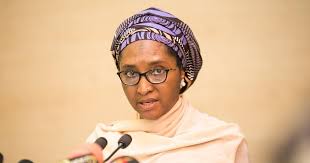GDP Growth Slows to 4.03% in Q3 2021

Recent data released by the National Bureau of Statistics (NBS) on the Nigerian economy showed that national economic output grew at an annualized rate of +4.03% in the three months to September, down from +5.01% in Q2 2021.
The GDP growth data came in close to predictions by analysts who had forecasted Q3 GDP growth of between 3.5 and 4.0%, given that the shallow base which supported the second Q2 growth rate lingered in Q3 2021. The economy had recorded a -3.62% contraction in Q3 2020 amidst a COVID-19 lockdown, which stayed till Q4 2020
Together, Nigeria’s average annual growth has appreciated from +2.7% in Q2 2021 to +3.18% in Q3 2021. Despite the improvement, the country’s growth lags its population growth rate, which as of the last count, was estimated as 3.3%. Quarterly real GDP came in at N18.54tr on account of a 5.44% growth in the non-oil sector. The third quarter of 2021 saw improvements in trade, Information, and communication (Telecommunication); Financial and Insurance (Financial Institutions); Manufacturing (Food, Beverage & Tobacco); Agriculture (Crop Production); and Transportation and Storage (Road Transport), which supported the real GDP growth.
Sector contributions: Agriculture revs but Services leads
Broadly, the Non-Oil sector contributed 92.51% of the country’s GDP in Q3 2021, 134 basis points larger than a contribution made in the third quarter of 2020, which was 91.27%, although 7 basis points lower than the second quarter of 2021 recorded as 92.58%. Meanwhile, the Oil sector contributed 7.42% to the Q2 2021 GDP; this represented a reduction of 183 basis points from 9.25% in Q1 2021, the non-oil sector accounted for the complementary 92.58%. The decrease in the oil sector’s contribution could be attributed to the fall in production from 1.61mbp in Q2 2021 to 1.57mbp in Q3 2021. Likewise, the real GDP in Q2 2021 received contributions from Services 49.65%, Agriculture 29.94%, and Industries 20.41%. The service sector has remained the highest contributing sector
The +1.22% growth in Agriculture was sufficient to ensure that the sector’s output would make a 29.94% contribution to the quarterly GDP- its largest since Q3 2020. Conversely, the contribution of the Services sector fell to its lowest since Q3 2020 despite an +8.41% expansion in the industry. This speaks to the relative size of the Agricultural sector. In Q3 2021, the contribution of the services sector decreased from 55.66% of the quarterly GDP in Q2 to 49.65%. Meanwhile, Agriculture’s contribution grew from 23.78% of the GDP to 29.94%
Sectoral Growth: Mining buckles again while Financial Services recovers
The Q3 2021 GDP suggests that while the entire economy saw an expansion of +4.03%, major economic sectors such as Financial and insurance, Transportation and Storage, Electricity, Water and Trade recorded double-digit growth. Agriculture, Manufacturing, ICT, Construction, Accommodation, and Food posted modest growth. Conversely, the Mining sector contracted -10.56% year-on-year (Y-o-Y) while Public Administration contracted by -0.15%.
A tremendous performance in the Finance and Insurance sector saw a +23.23% growth as against the -2.48%, recorded in Q2 2021. The impressive sectoral performance was accounted for by a +25.5% improvement in the output of financial institutions; this reflects a 300bp increase in the sub sector’s growth.
The Agricultural sector gained +1.22% Y-o-Y in Q3 2021, an outcome that was less than the +1.33% growth recorded in Q1 2021. Forestry accounted for the largest increase in the sector, 1.98%. The Manufacturing sector also grew in Q3 2021 by +4.29% Y-o-Y, an improvement on the +3.49% growth recorded in Q2 2021. The Information & Communication sector also recorded an increase of +9.66% in real terms.
The Mining sector again fell by -10.56% Y-o-Y, attributed mainly to a contraction in the Oil and Gas sub-sector, constituting 91.88% of the sector. Oil production fell in the second quarter from 1.61mbpd in Q2 to 1.57mbpd. Meanwhile, Electricity and Gas grew by +14.36% in Q3 2021. The Construction sector grew by +4.1% in the third quarter, higher than the +3.7% growth recorded in Q2 2021.
Accommodation and Food also grew marginally by +2.09% Y-o-Y, the Transportation sector grew by +20.61%. The arts, entertainment and recreation sector rose by +3.68% Y-o-Y. Meanwhile, growth in Real Estate services for Q2 2021 was +3.85%. The Administrative and Support Services recorded a growth rate of +4.79%. While actual growth in education Y-o-Y stood at 0.63% in Q2 2021, this represents 24.76% points increase upon the growth recorded in Q12020
Drivers of the Growth Buggy
Nigeria’s economy has grown by +3.18% in 2021, and the growth figures reflect significant growth in the Agricultural sector attributed to the harvest season. Unfortunately, even at this rate, Nigeria’s sustainable development goals remain a fantasy. Analysts note that investment is an integral part of growth models; Nigeria must create the appropriate policy framework to attract investment to achieve required growth. Economists observe that the government needs to take advantage of the prospects in the N15trn Infraco funds to stimulate capital accumulation in the Agricultural sector which presents various opportunities given the AfCFTA agreement.
The Nigerian government needs to consider innovative steps to address the insecurity problems of the country. Kidnapping, banditry, insurgency and farmers versus herder’
s conflict have made the country’s farming belt unsafe.
The consistent decline in the Mining sector reflects the operational and maintenance problems in the country’s upstream sector. Additionally, to attract the much-needed Foreign Direct Investment (FDI) into the country, there is a need to address the problems of institutional weaknesses and multiple $US/Naira exchange rates.
Across Borders- Views from Abroad
By its +4.03% growth in Q3 2021, the Nigerian economy outpaced significant world economies. The US economy grew by a disappointing +2% due to cutbacks in government spending and generally lower consumer spending, and the American White House had stopped jobless benefits. Some analysts and policymakers argued that the benefits constituted a disincentive to work. On account of higher inflation fears, which reached 6.2% in October, the FOMC decided to embark on quantitative tapering at the start of November. Although the committee is expected to see the bond purchase program before hiking rates to control inflation, the newly signed infrastructure bill may worsen the inflation outlook if the rates do not rise earlier than planned.
In the UK, GDP growth was only +1.3%, the weakest quarterly growth since early 2021, falling below the median forecast of +1.5%. However, while inflation concerns around supply bottlenecks are making a few Bank of England MPC members consider a hike in rates, the fear that such a policy could stifle growth has forced the committee to hold rates but refuse to extend its bond purchase program.
Conclusion/Outlook
The IMF makes a 2.6% Nigerian growth projection for 2021, with a nine-month growth of 3.18%. Nigeria appears to be living up to the multi-lateral organisation’s projections. However, given that the growth seen in the last two quarters has been supported largely by a 2020 low base effect- which would ease off by Q4, the outlook for the fourth quarter is expected at between 1.5 and 2%. The large consumer spending that is customary in the festive season at the end of the year would probably see Trade and Services improve. At the same time, output from Agriculture will rise in the fourth quarter, as the country enters the December/January harvest season. Nigeria’s per capita GDP is estimated at $2,421. This places the average Nigerian behind citizens of countries like Seychelles ($11,425), Mauritius ($8,622), Namibia ($4,211) and South Africa ($5,090).
Finally, given the low vaccination rate in Nigeria, a surge in the delta variant of COVID-19 remains a negative risk factor to growth. Likewise, an increase in oil output due to a return of Iranian oil or a release from strategic reserves can lower crude oil prices.
According to Fitch Ratings, Nigeria’s Real GDP growth is expected to remain below its population growth rate in the medium-term
Finally, given the low vaccination rate in Nigeria, a surge in the delta variant of COVID-19 remains a negative risk factor to growth. Likewise, an increase in oil output due to a return of Iranian oil or a release from strategic reserves can push crude oil prices low
ADAPTED FROM PROSHARE NIGERIA






